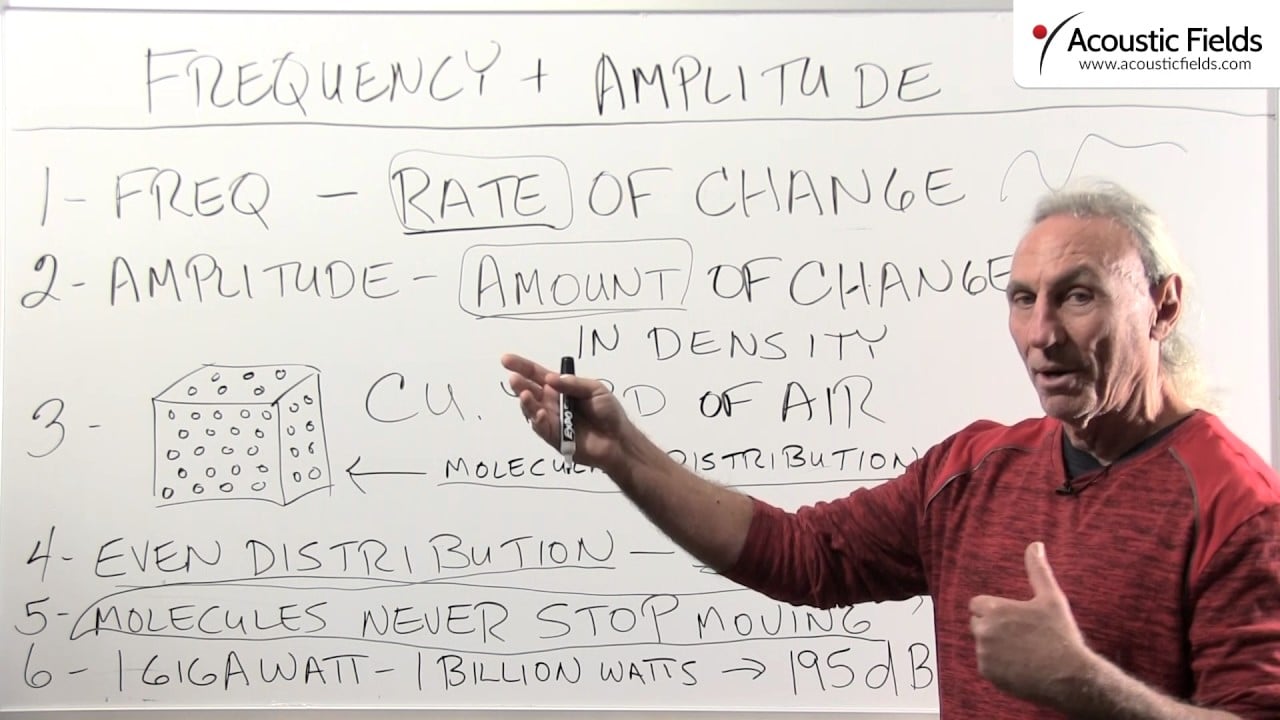Today we’re going to talk about frequency and Amplitude. I want you to use a little process called visualization, let’s do some definition first so we have some working knowledge of what’s going on. Frequency and amplitude, we hear these words all the time and I use them a lot in acoustics because they’re very very important. I think we all know frequency, we all know that every sound we hear has a label to it, it has a definition to it. Amplitude, the amount of it is a little bit different so let’s look at both of those.
So frequency is the rate, we all see frequency response on our amplifier’s performance, our speakers performance but amplitude is a little bit different. So amplitude is the amount of energy and frequency is the rate at which that energy occurs. So let’s do a little visualization and see if we can figure it out from a molecular level what it really means. So if we take a cubic yard which is three feet three feet three feet we visualize that and inside that cubic yard we have all these molecules of air. So it’s always the distribution within that space that defines rate and amount so if we have an even distribution of all these molecules in there then we have complete silence but it’s the movement of those molecules, the rate and the amount of moving together that creates sound or in rooms, small rooms, noise most of the time.
Rhomboids are when all of those issues are slamming into each other, when all those molecules are slamming into each other because they never stop moving. So it’s all about, how do we figure out how to balance out the rate and the amount of energy within our room? So we want to make sure that we’re using the right amount of energy for the right amount of room size and you got to realize that this energy always causes the noise, it’s the air moving between the room surfaces that produces the noise. It’s the lack of movement that produces sound so we want to be really cognizant of that fact. Also here’s a little factoid that’s kind of neat, it takes a one gigawatt or a billion watts to produce 195 DB SPL so you can see that kind of energy requires a lot of power.
So we don’t face that kind of situation in our rooms but it goes to show you the amount of energy that’s required to produce that kind of sound pressure. So the pressure inside of our rooms is really determined by the molecular movement and the distribution of it and the rate amount, that’s what gives us frequency and amplitude. I hope that helps.
—
This is an unedited transcript from our video series from Acoustic Fields. There will be some errors in grammar and sentence structure that occur during this translation process.
For complete understanding and comprehension, please view the video which is included in this text. For any additional information regarding this topic or others relating to room acoustics, please contact us directly at:
P: 520 – 392 – 9486







